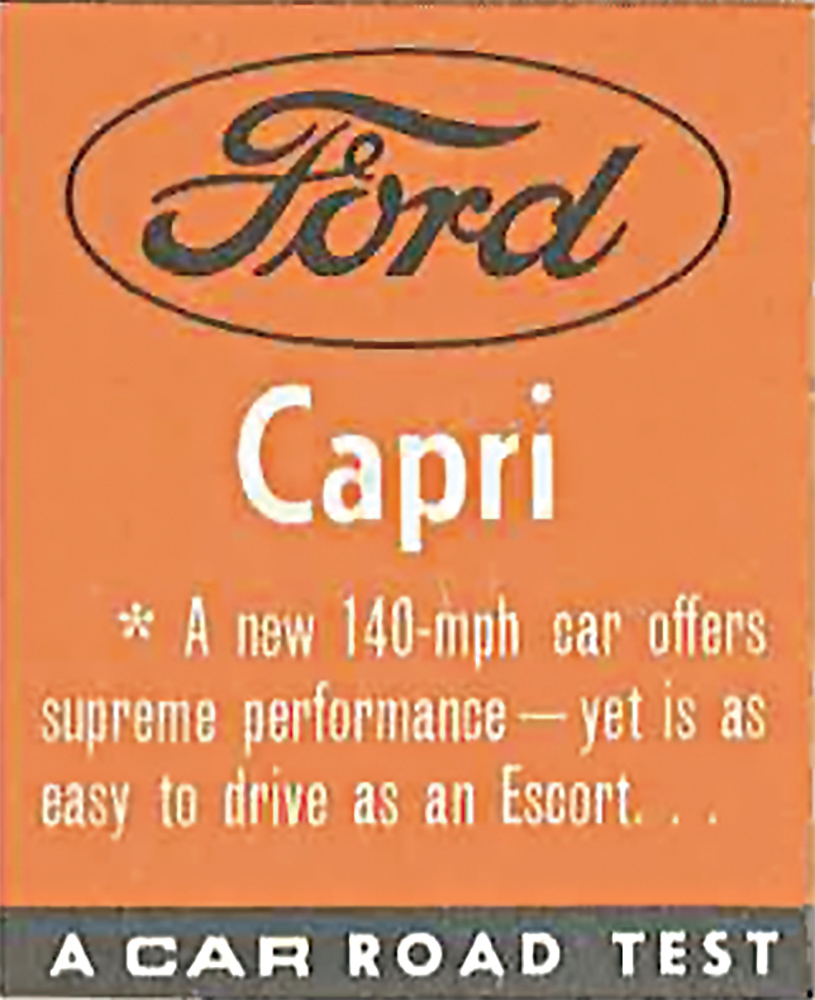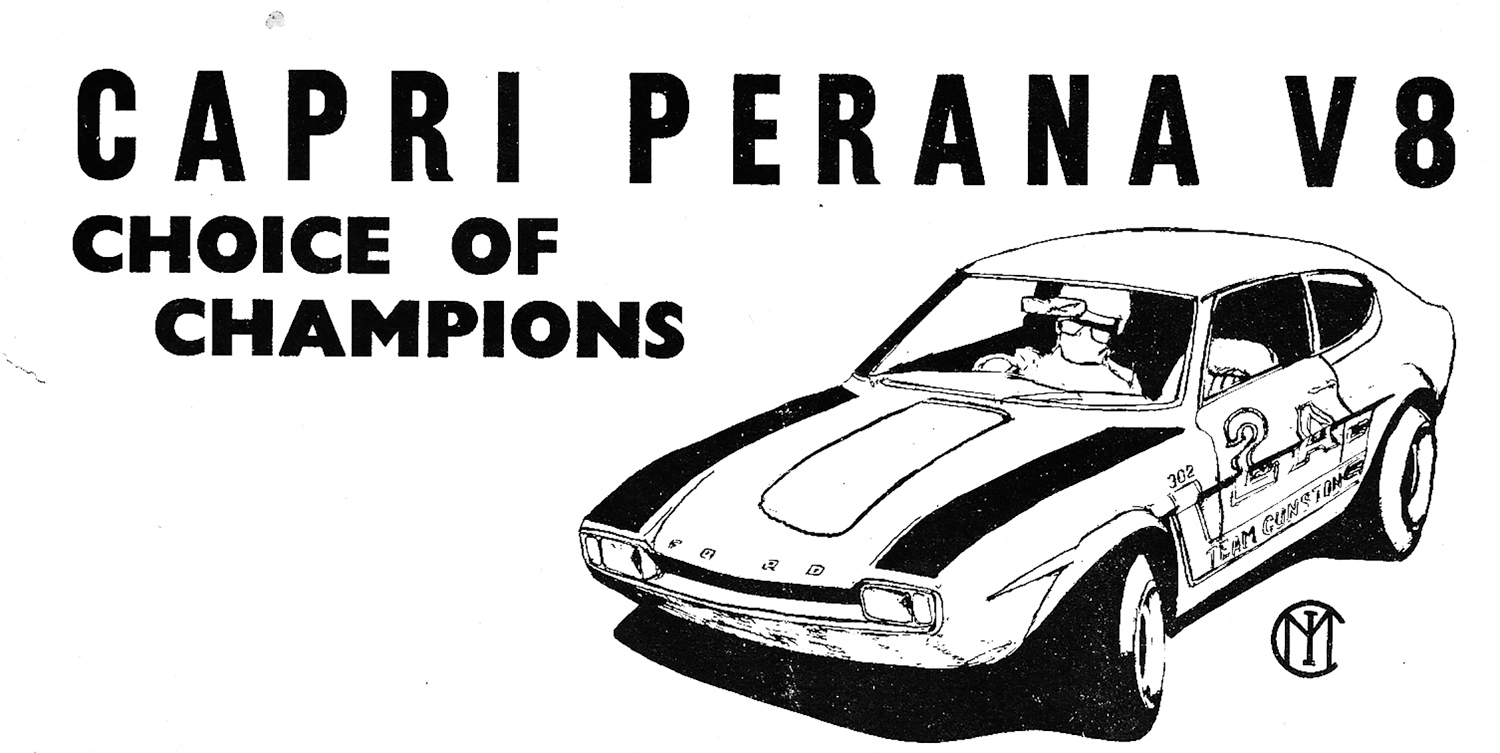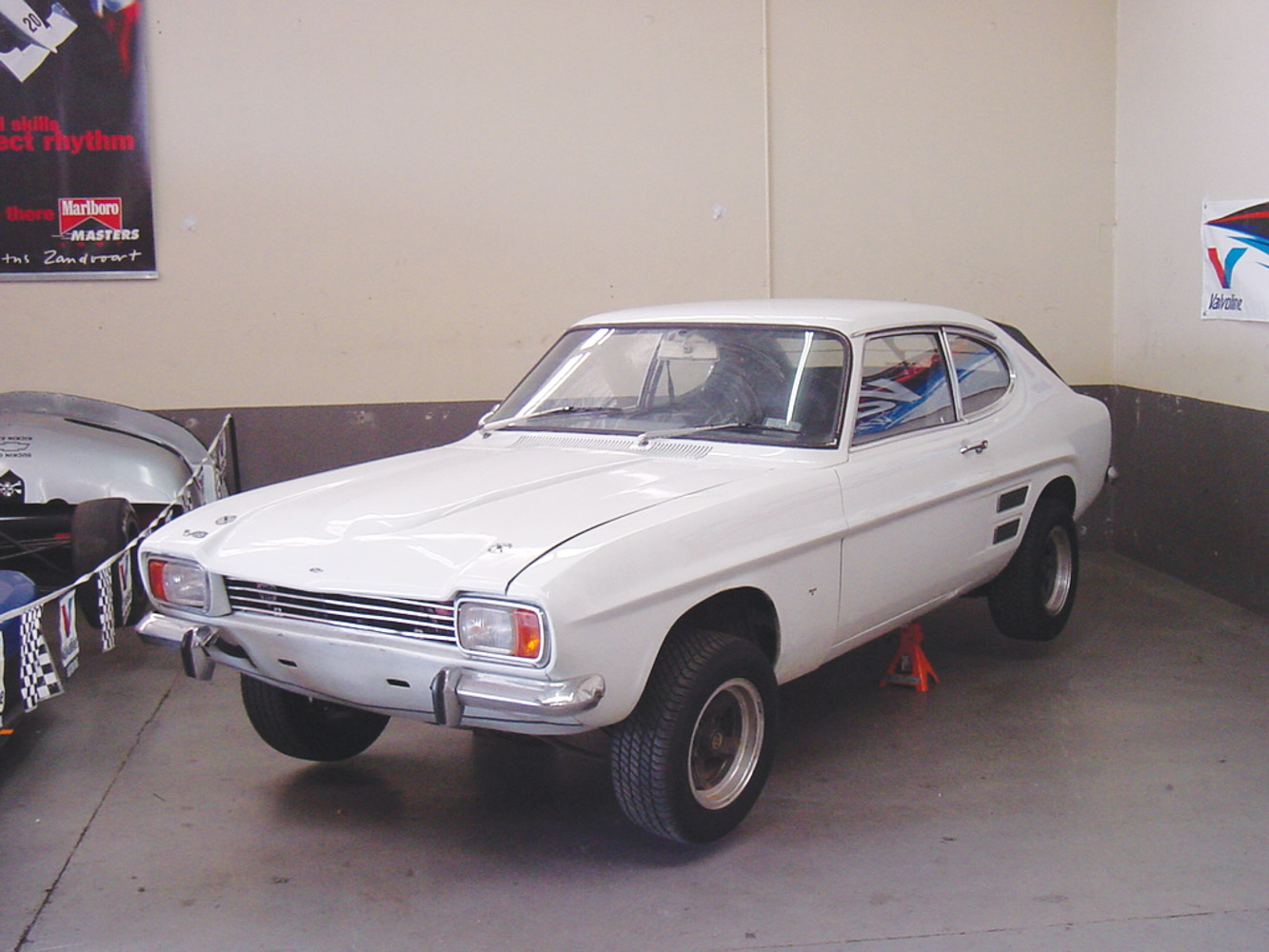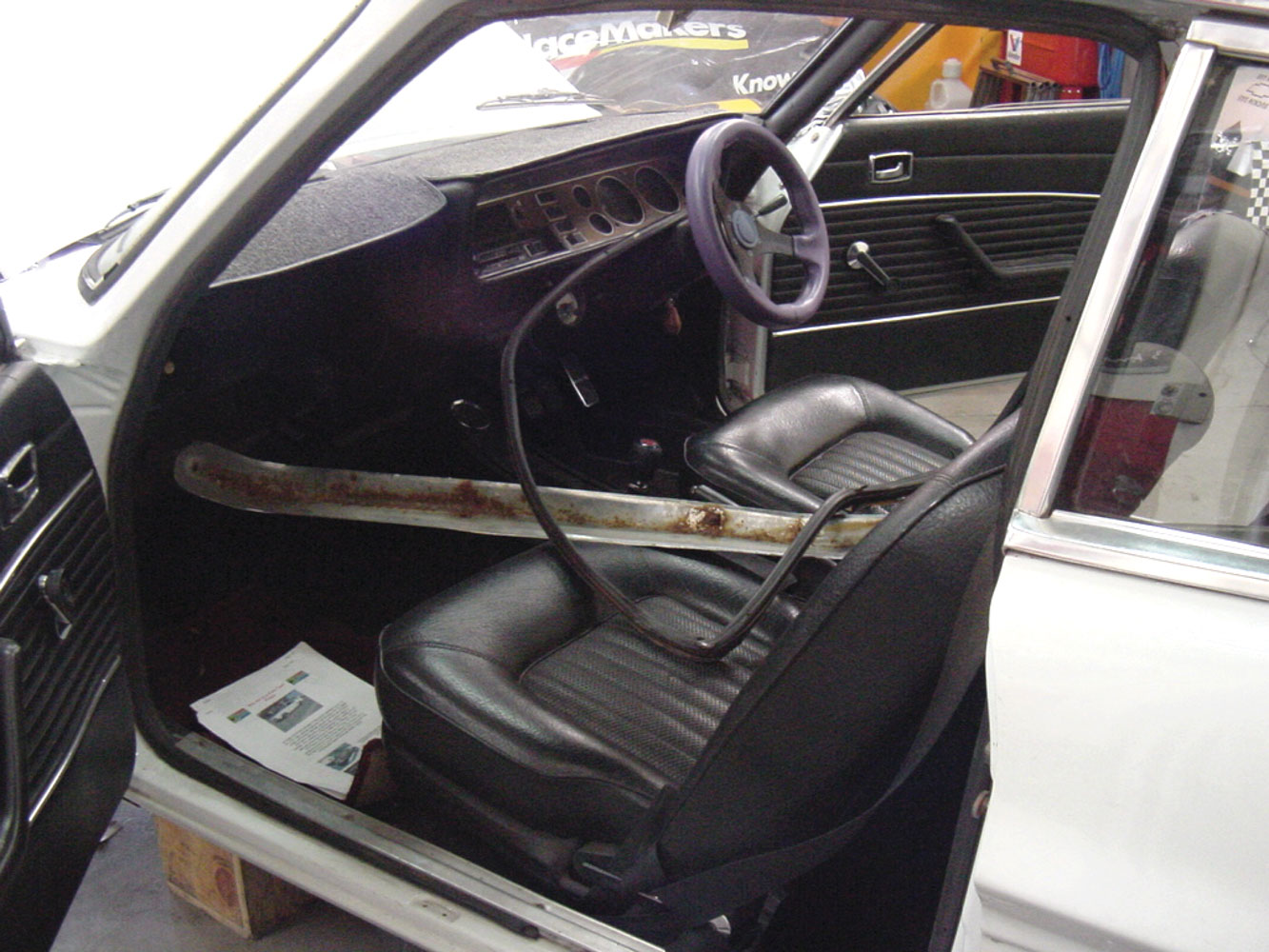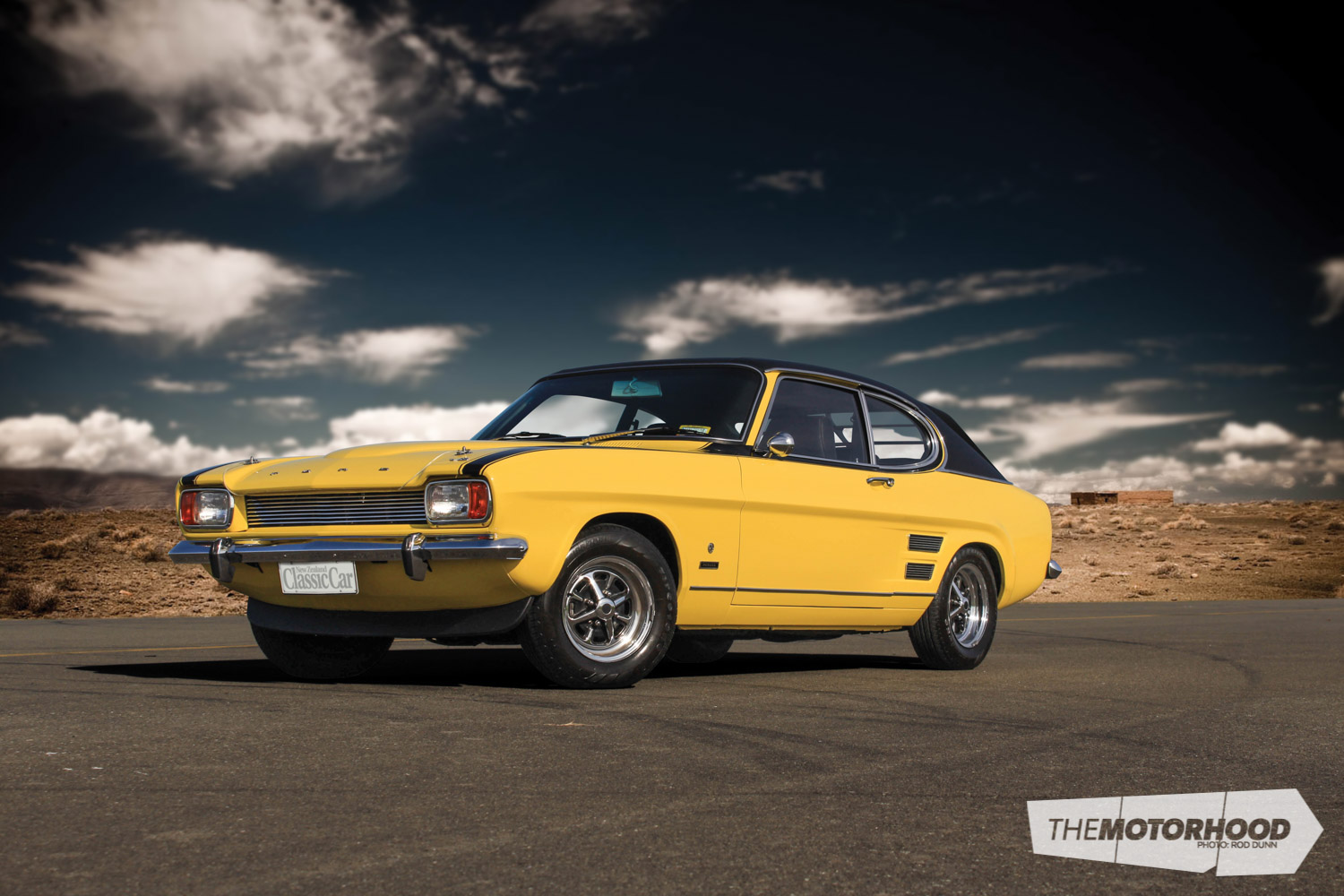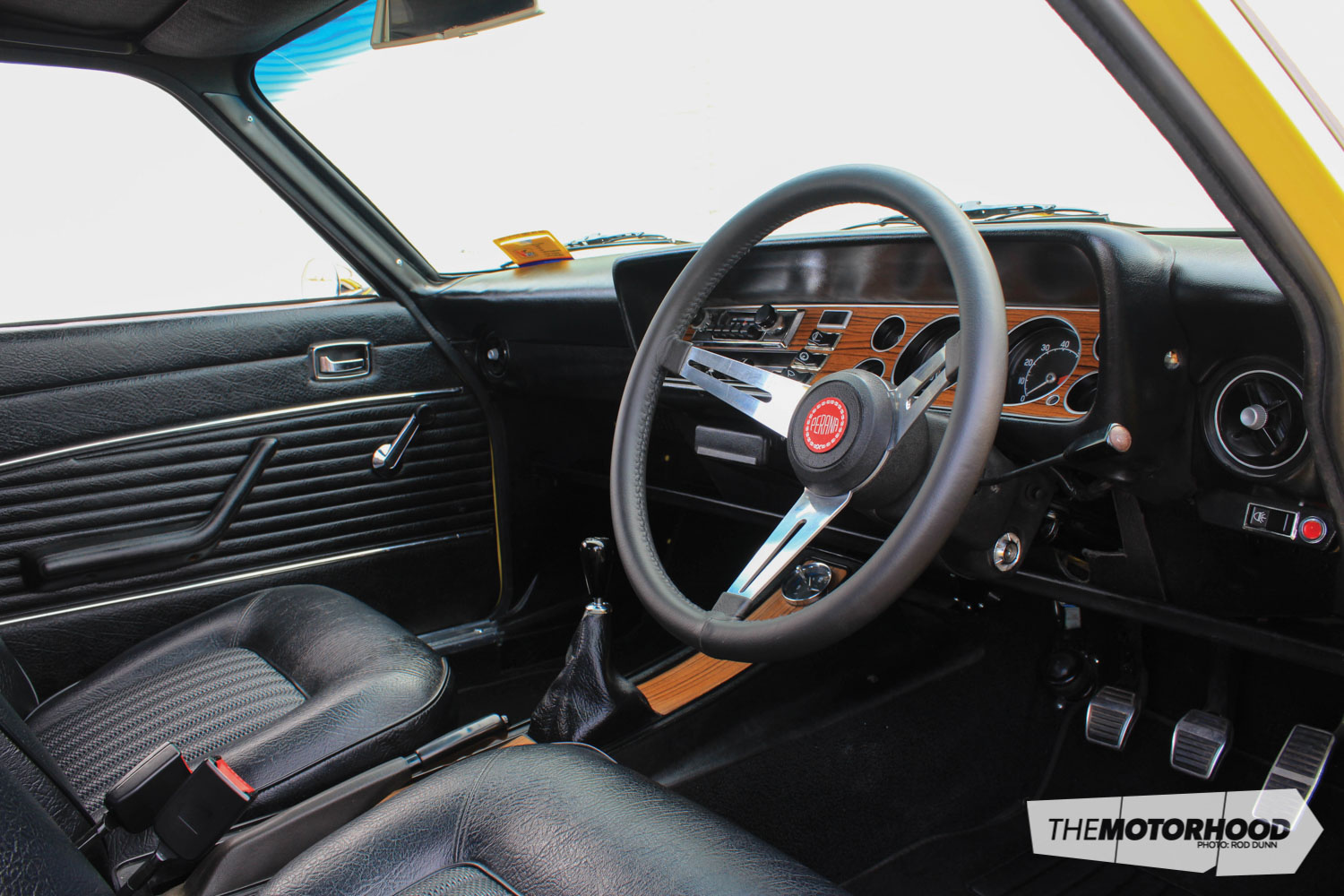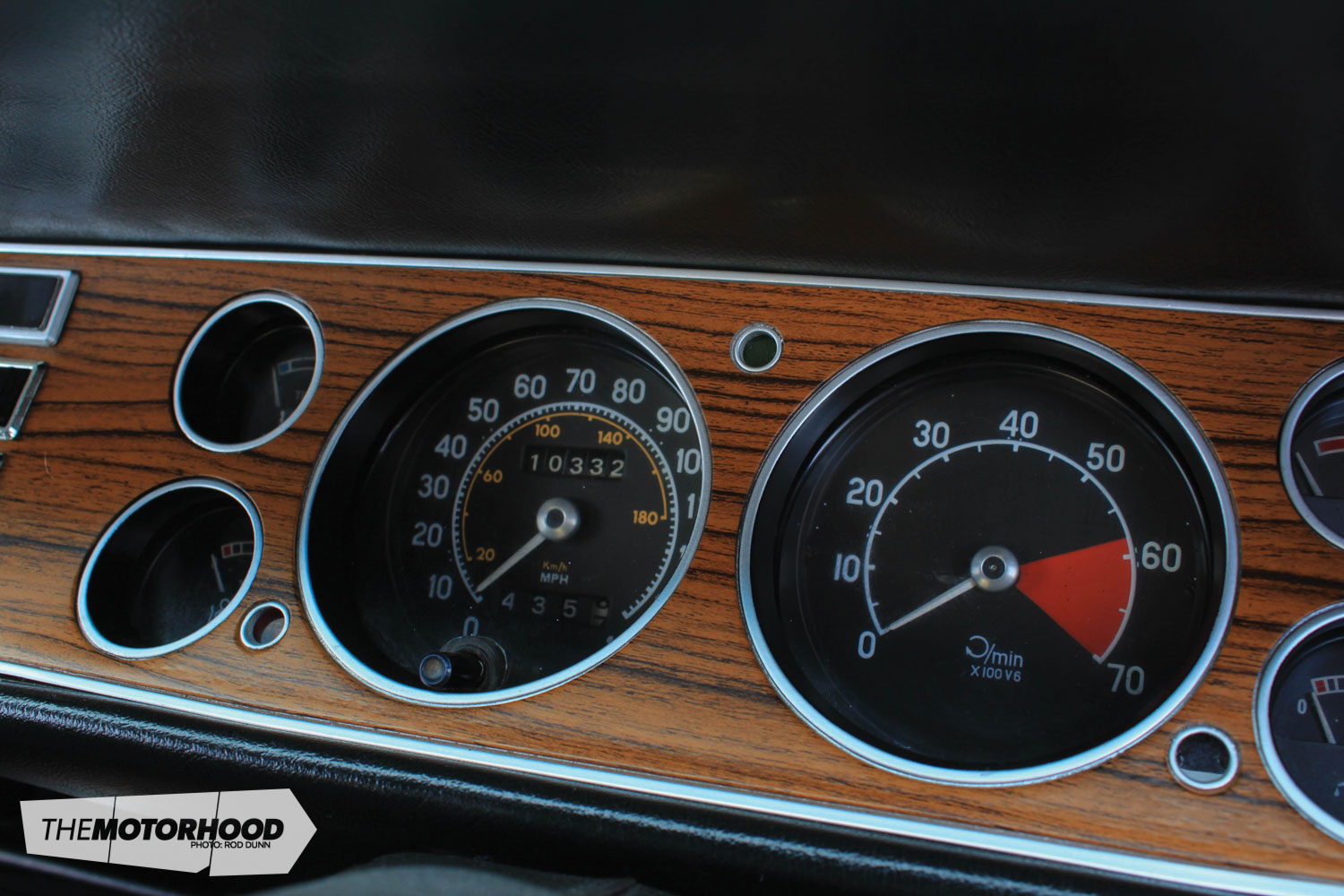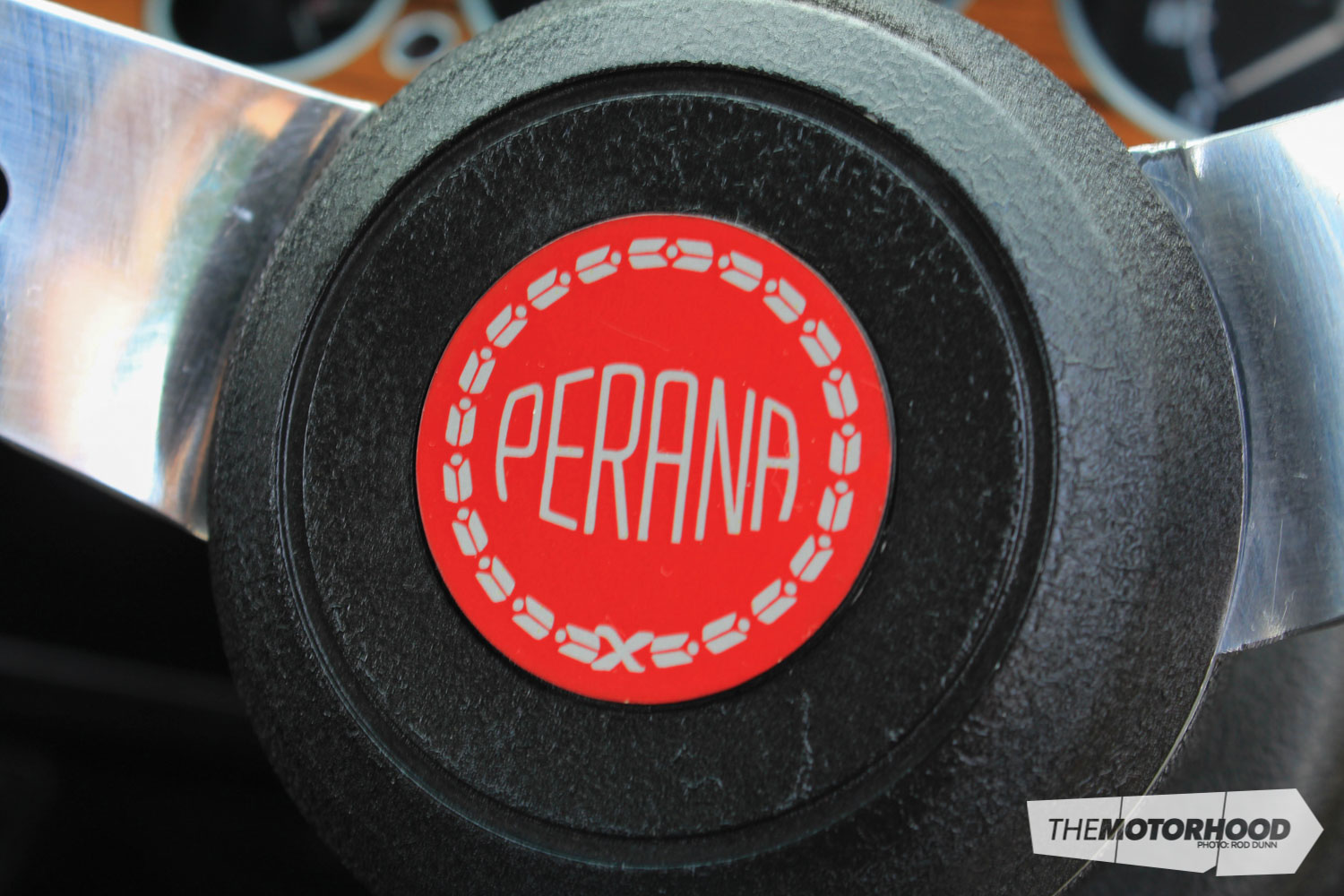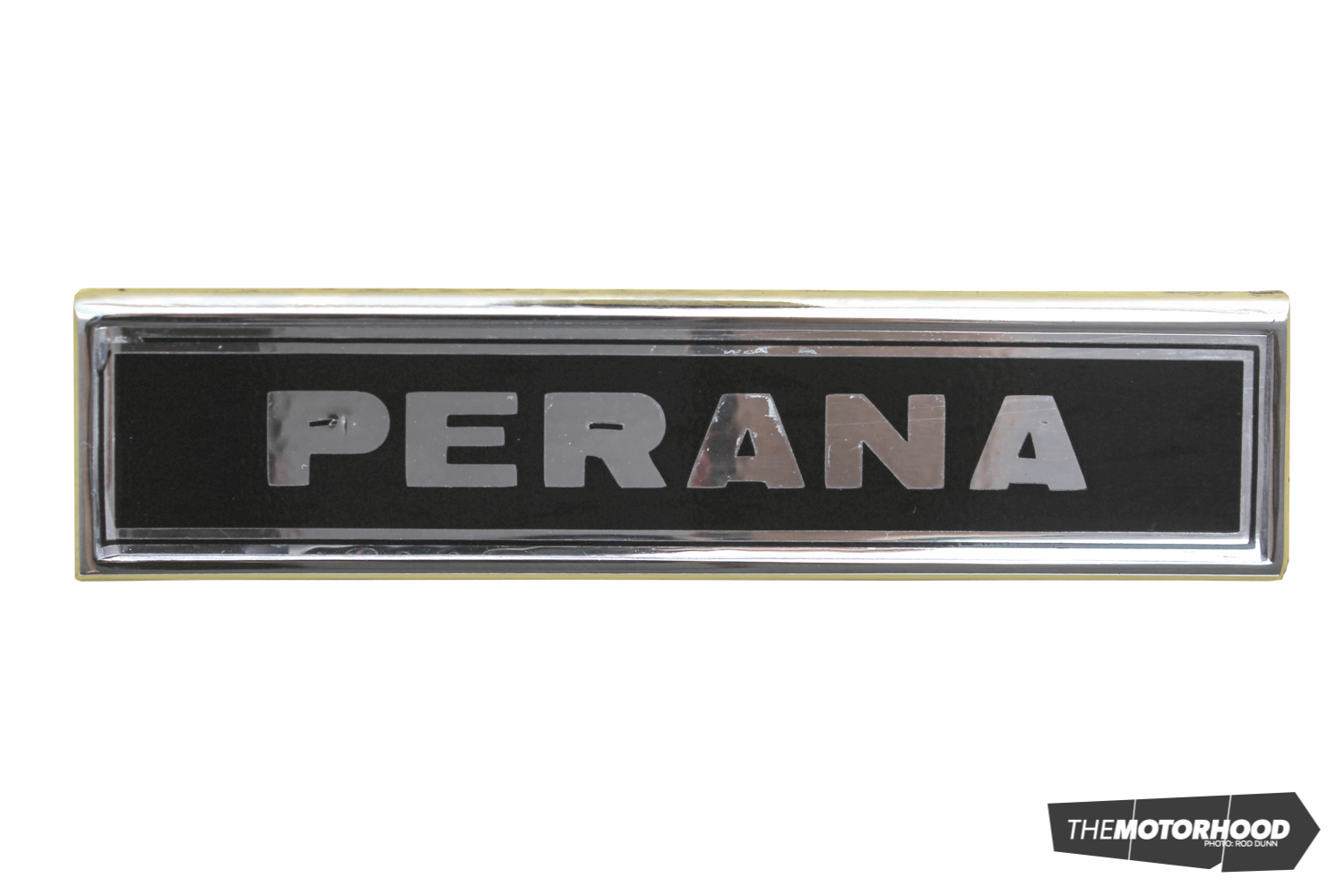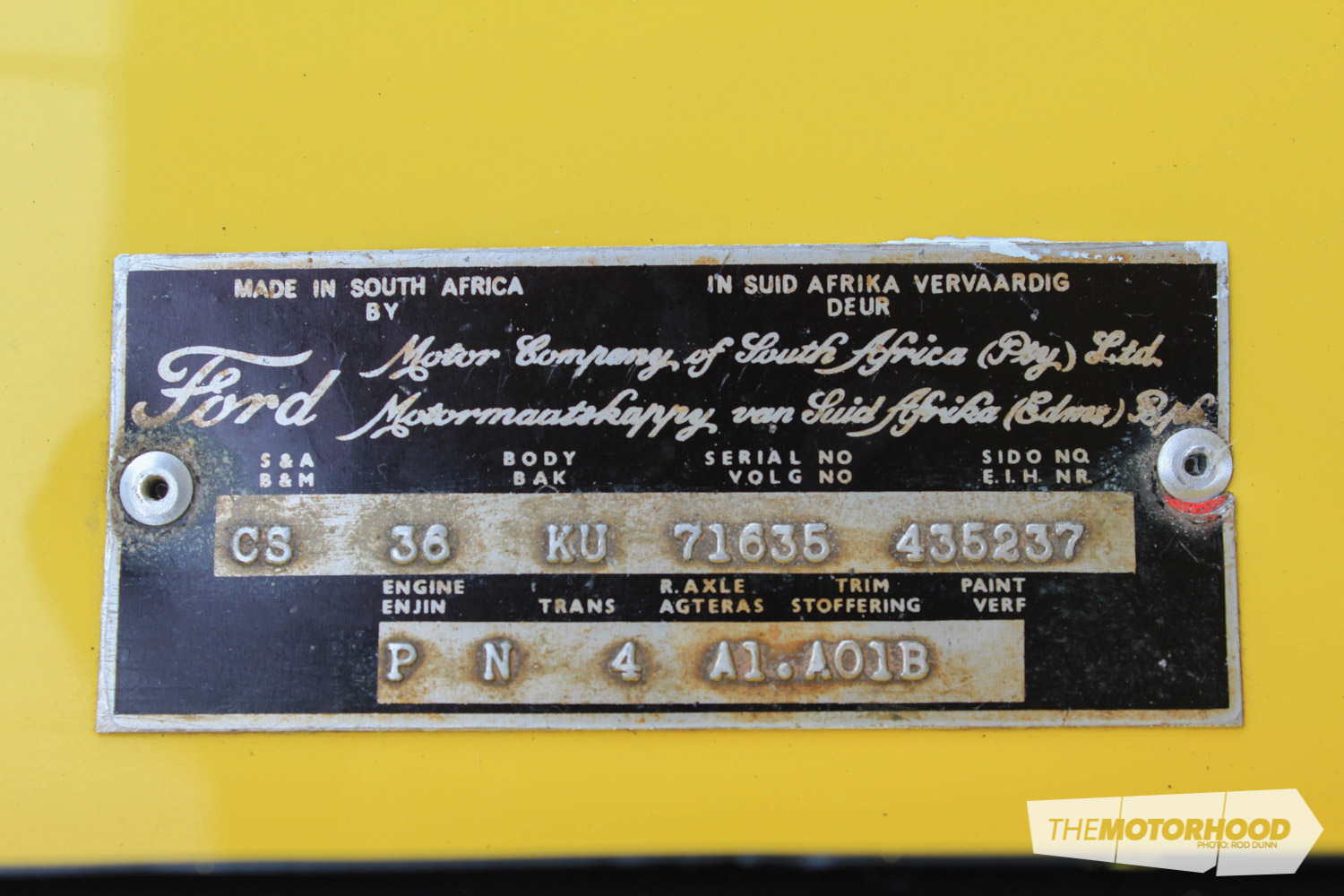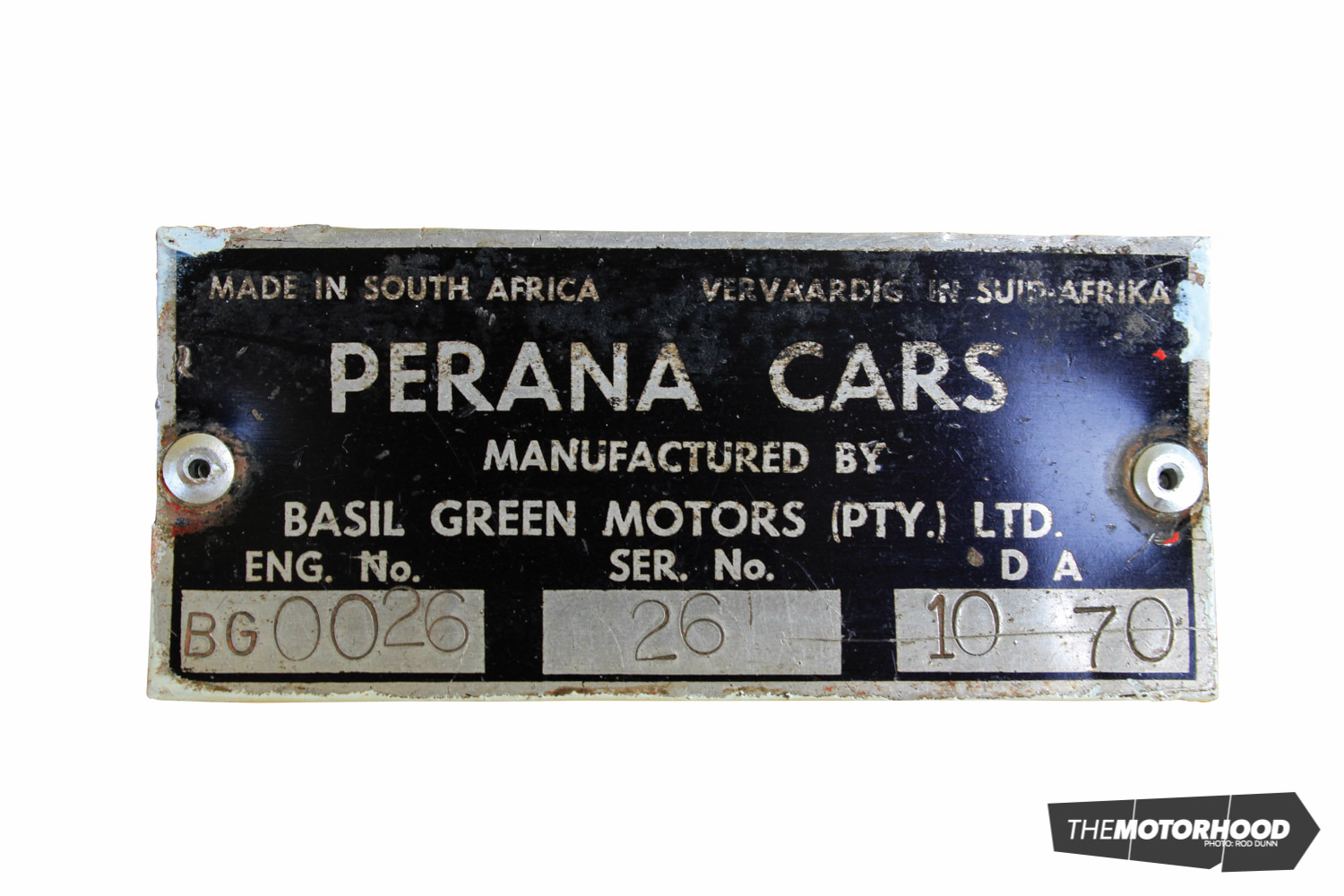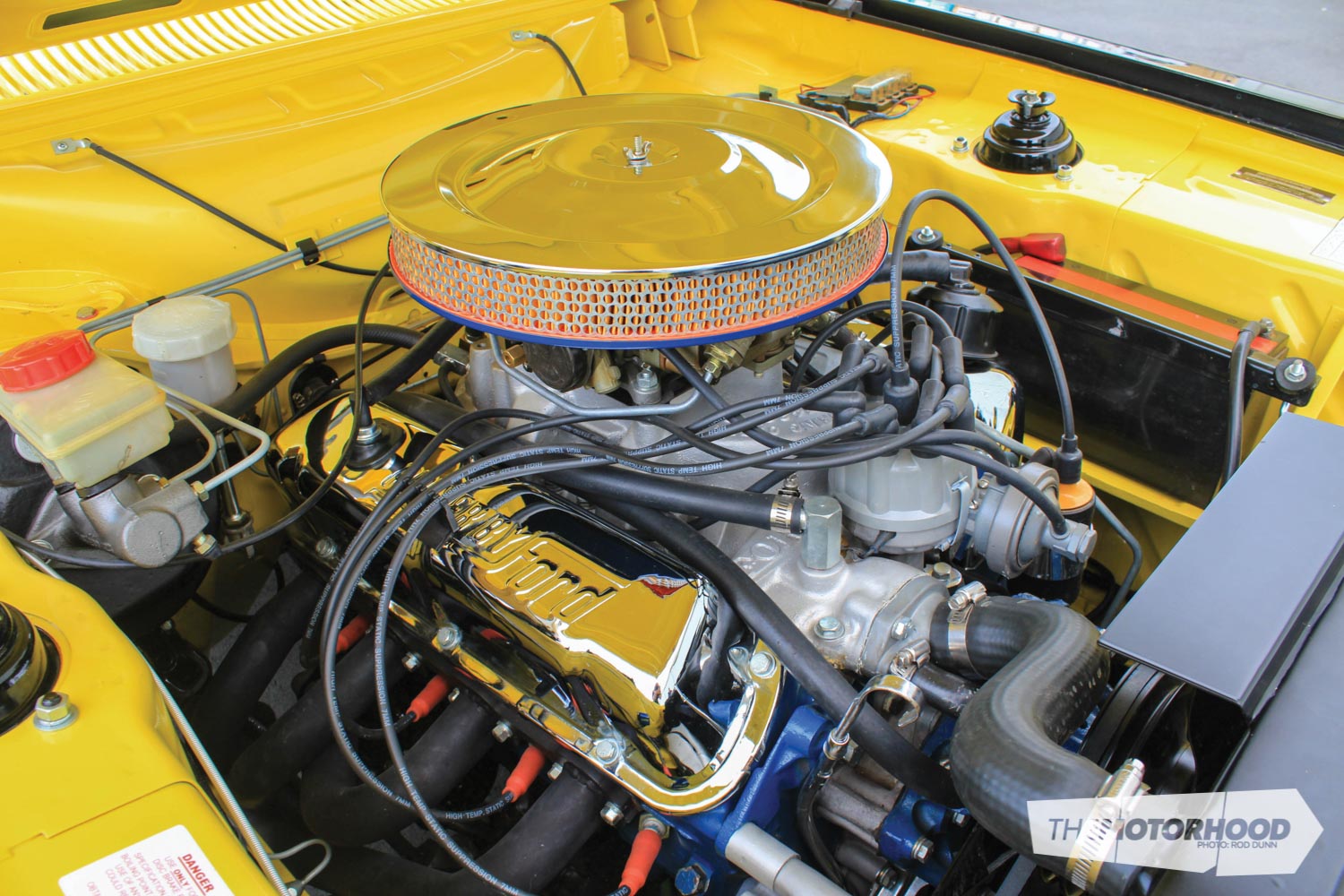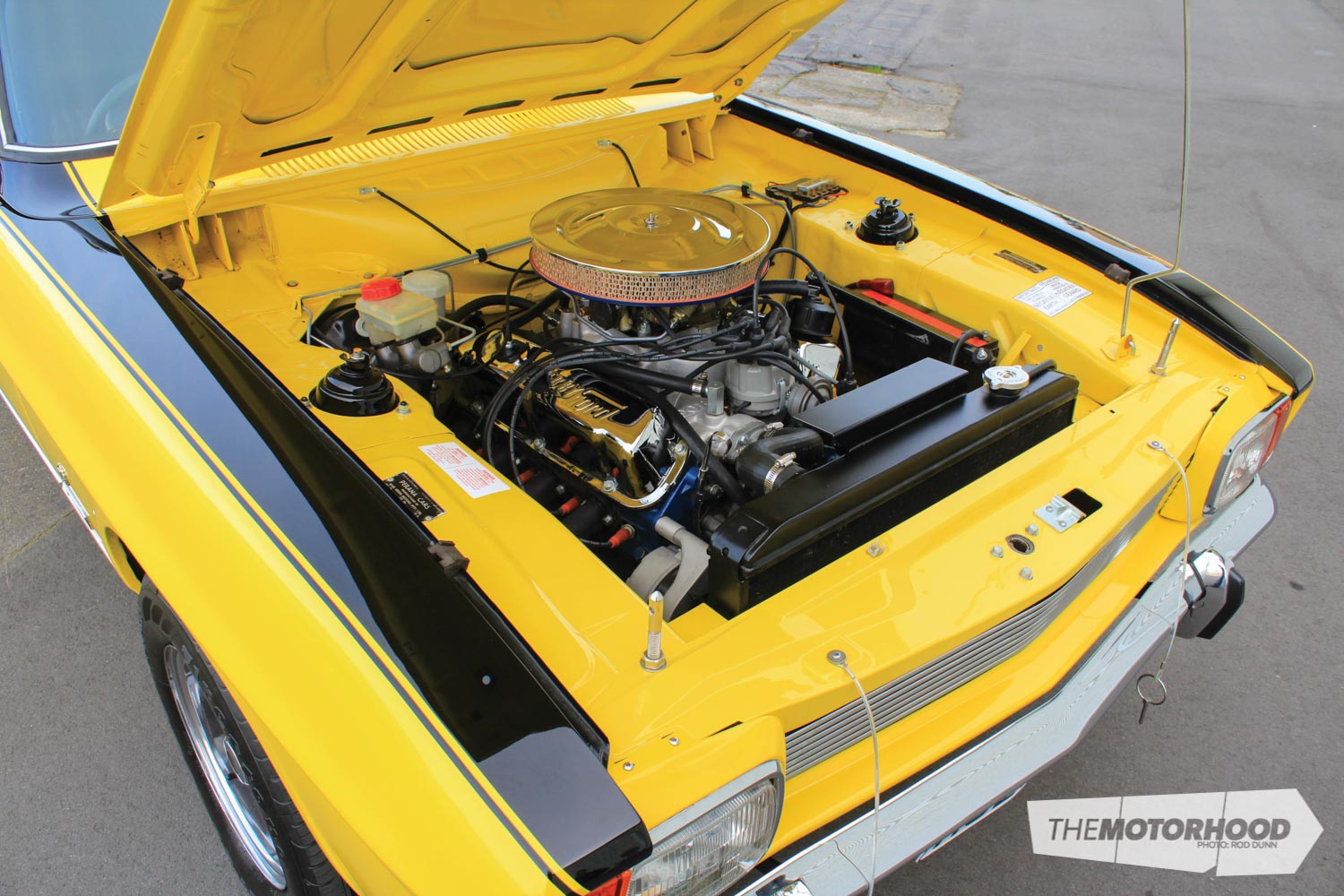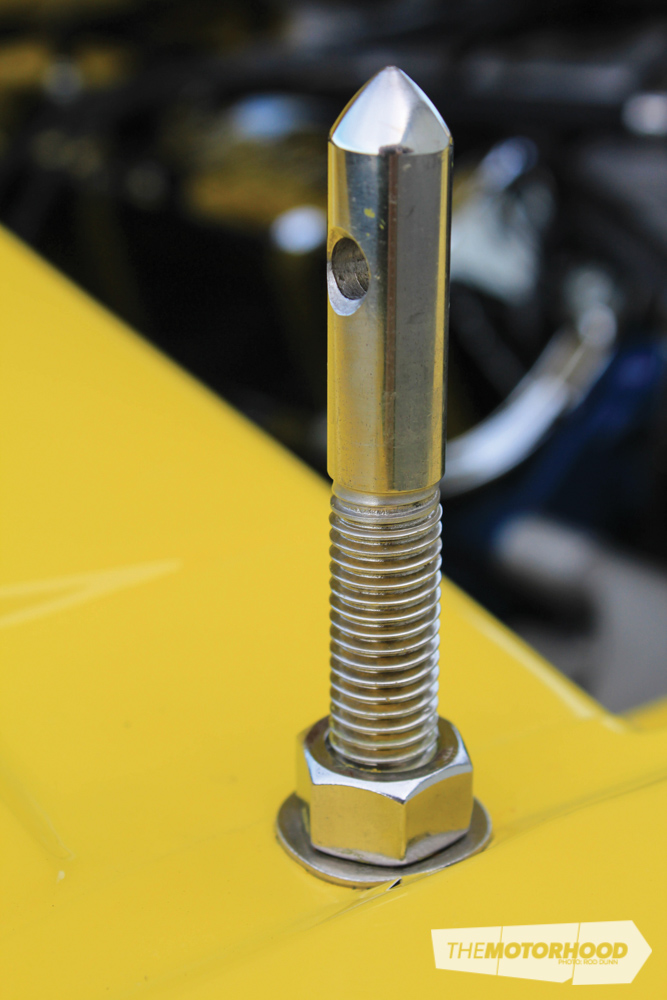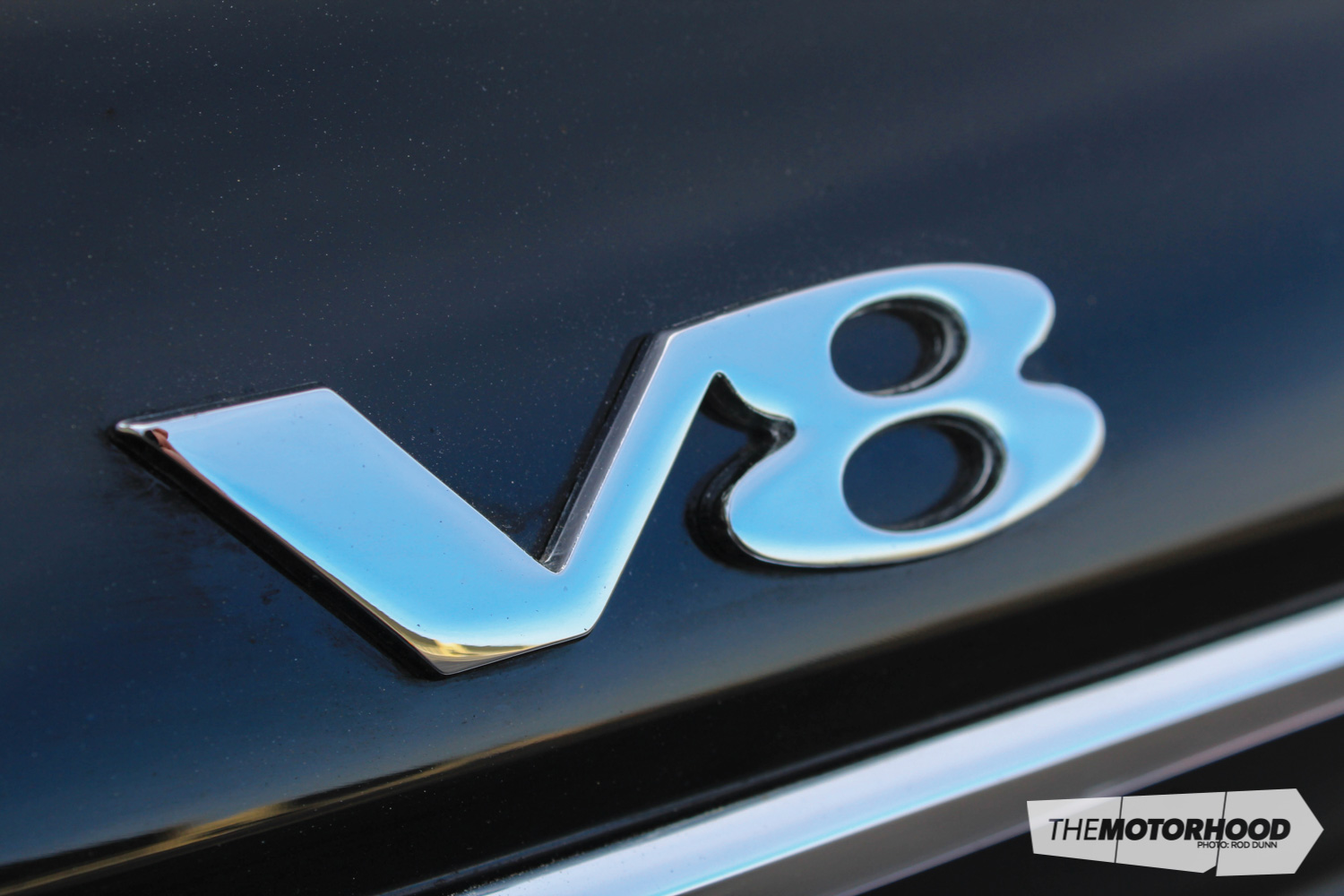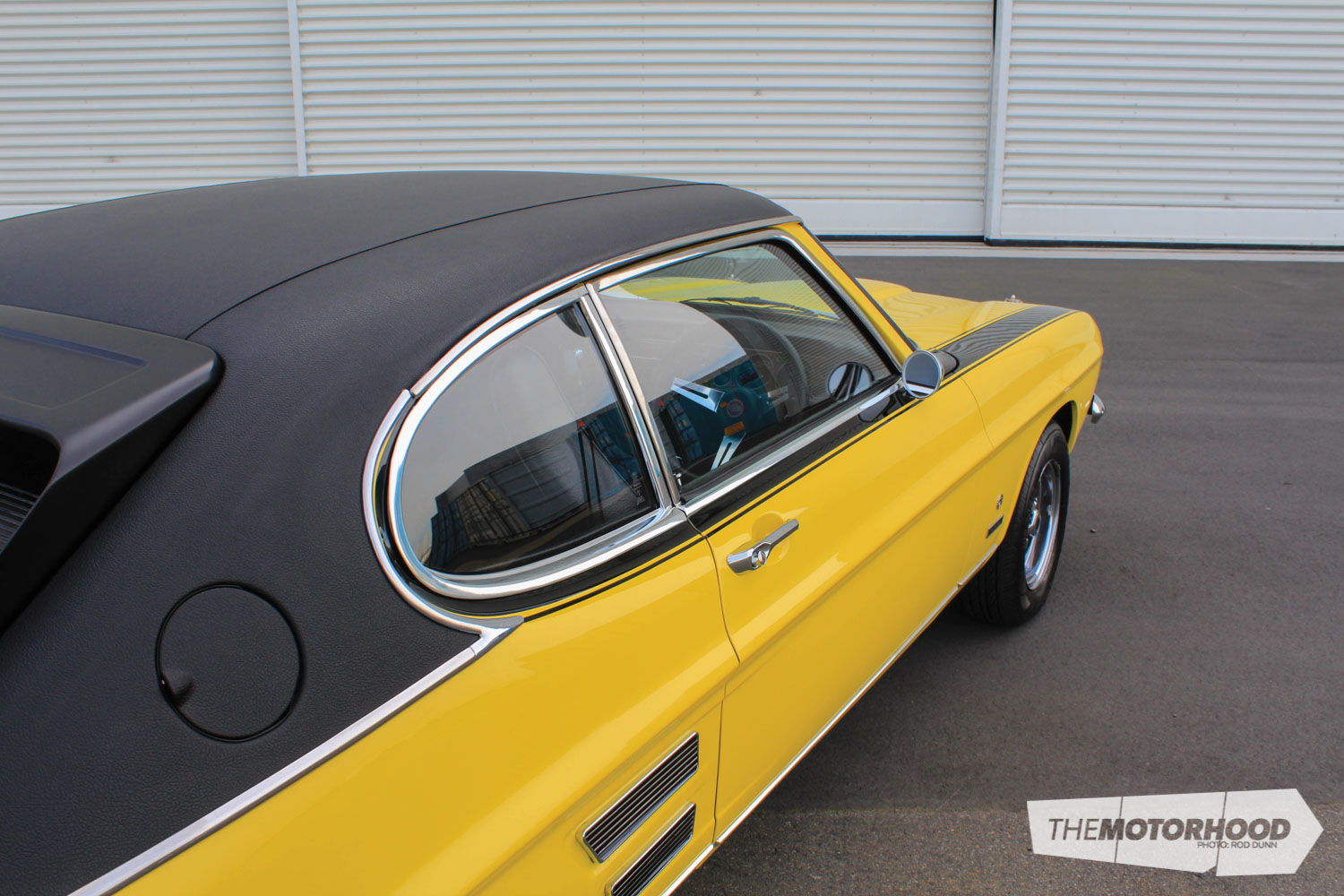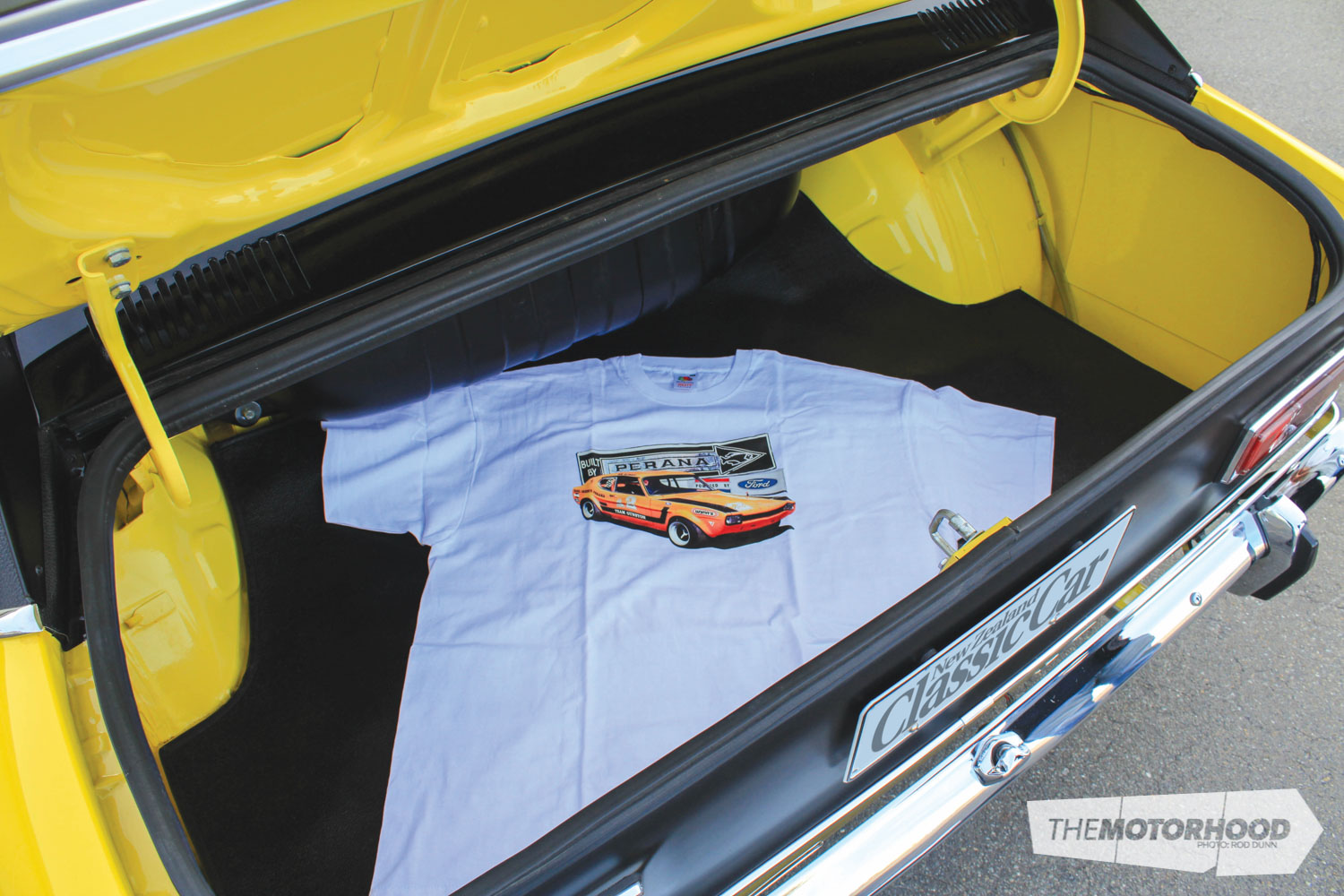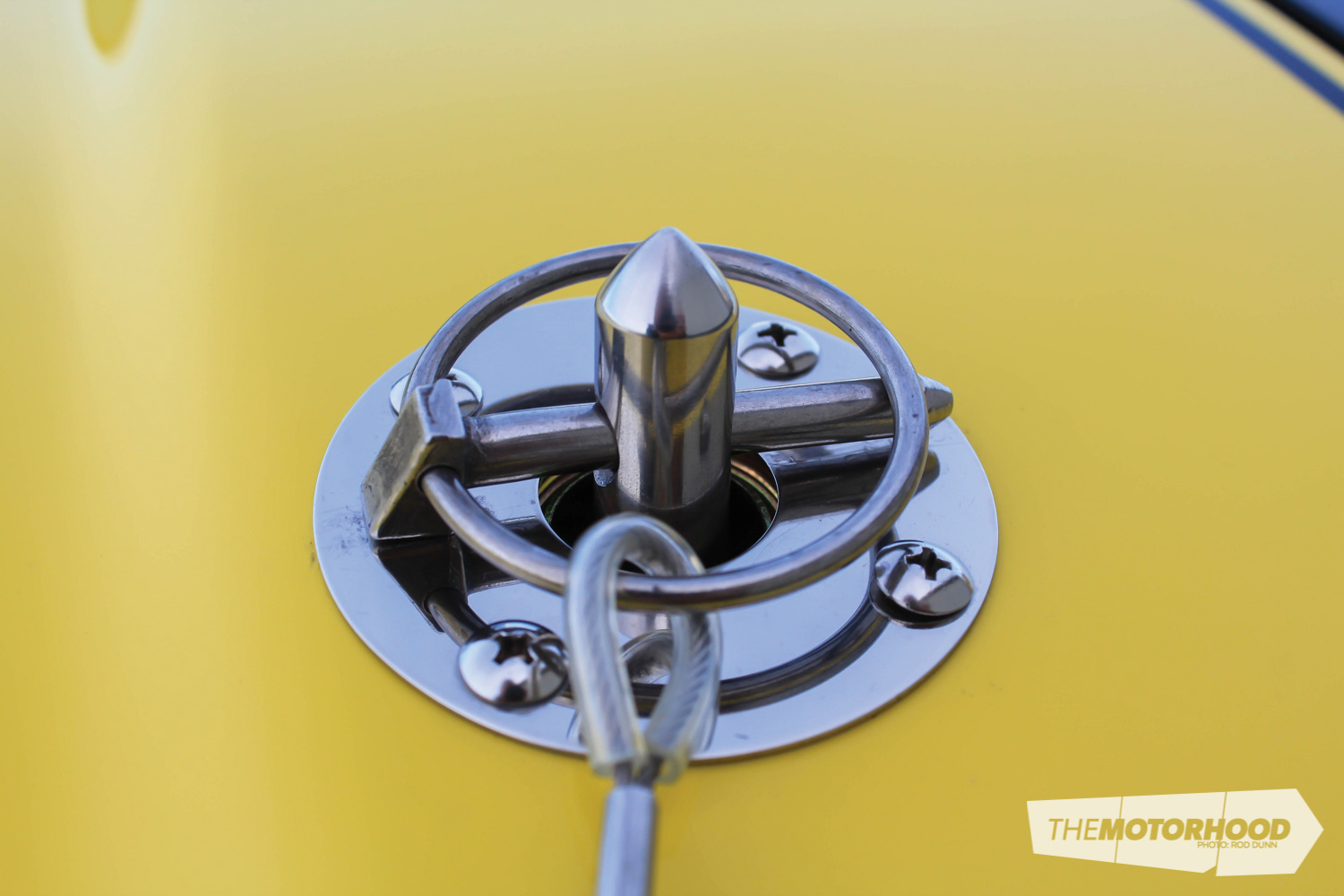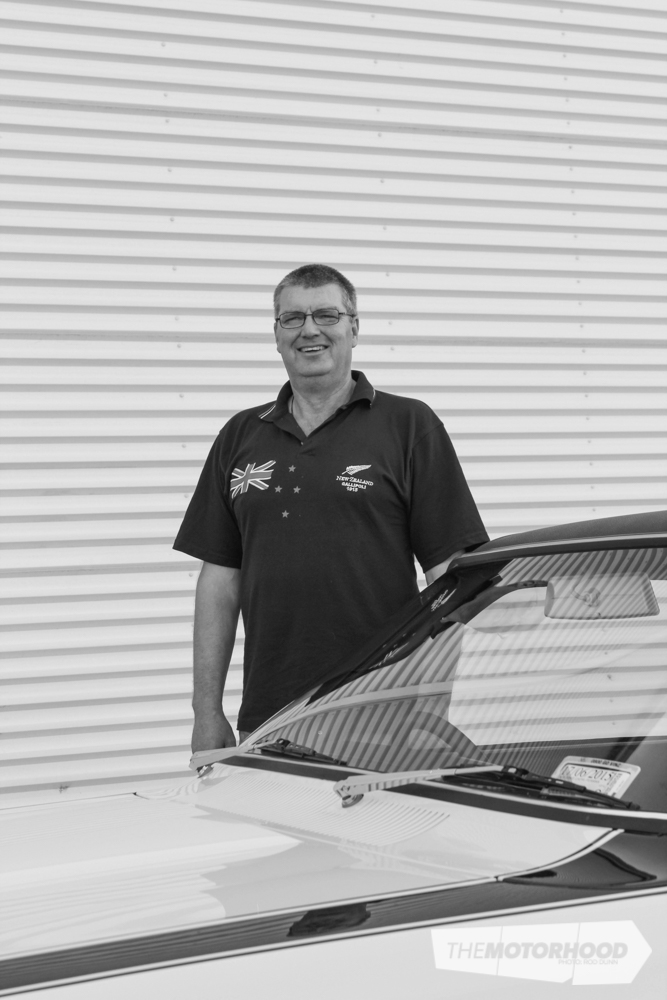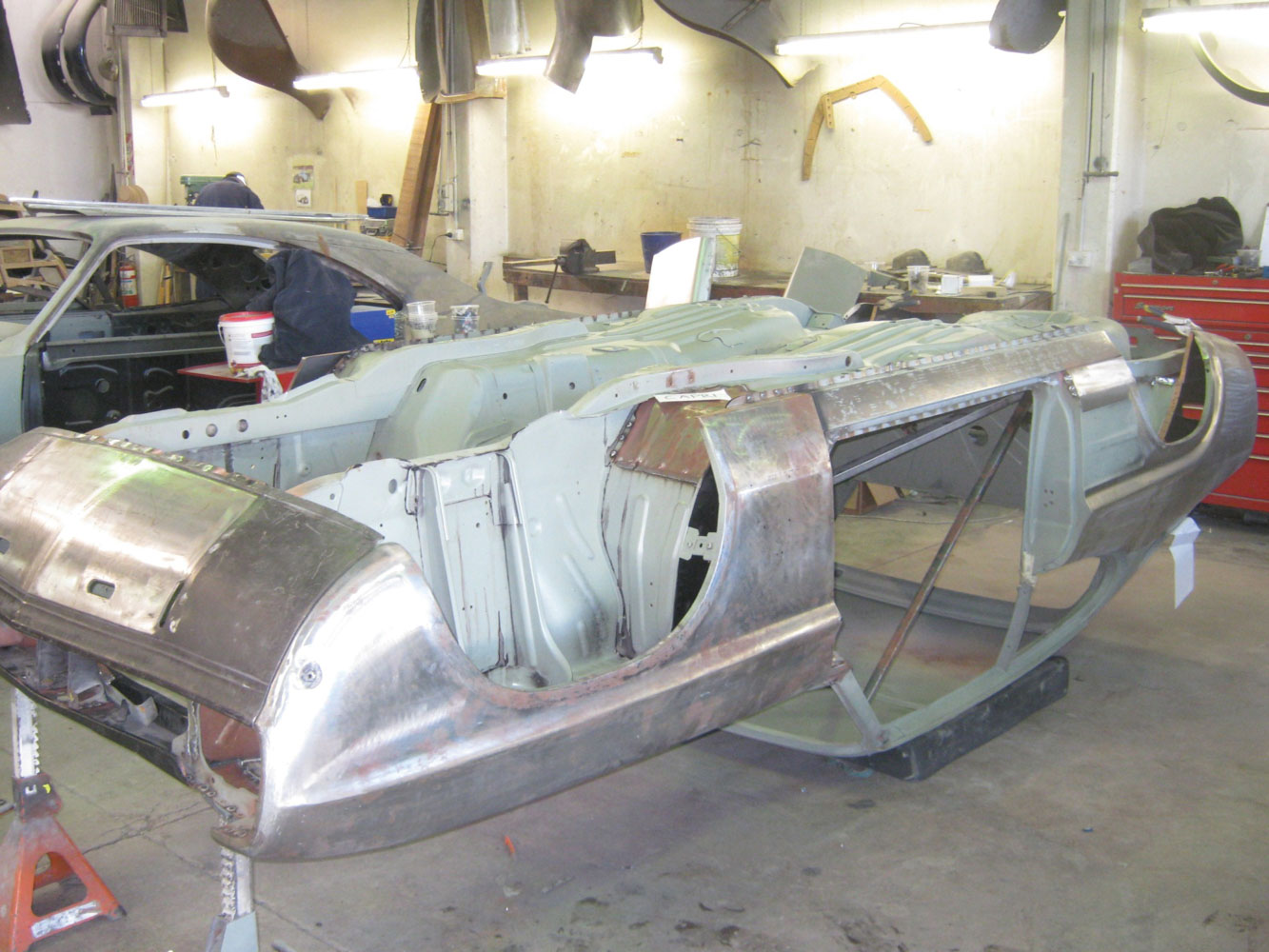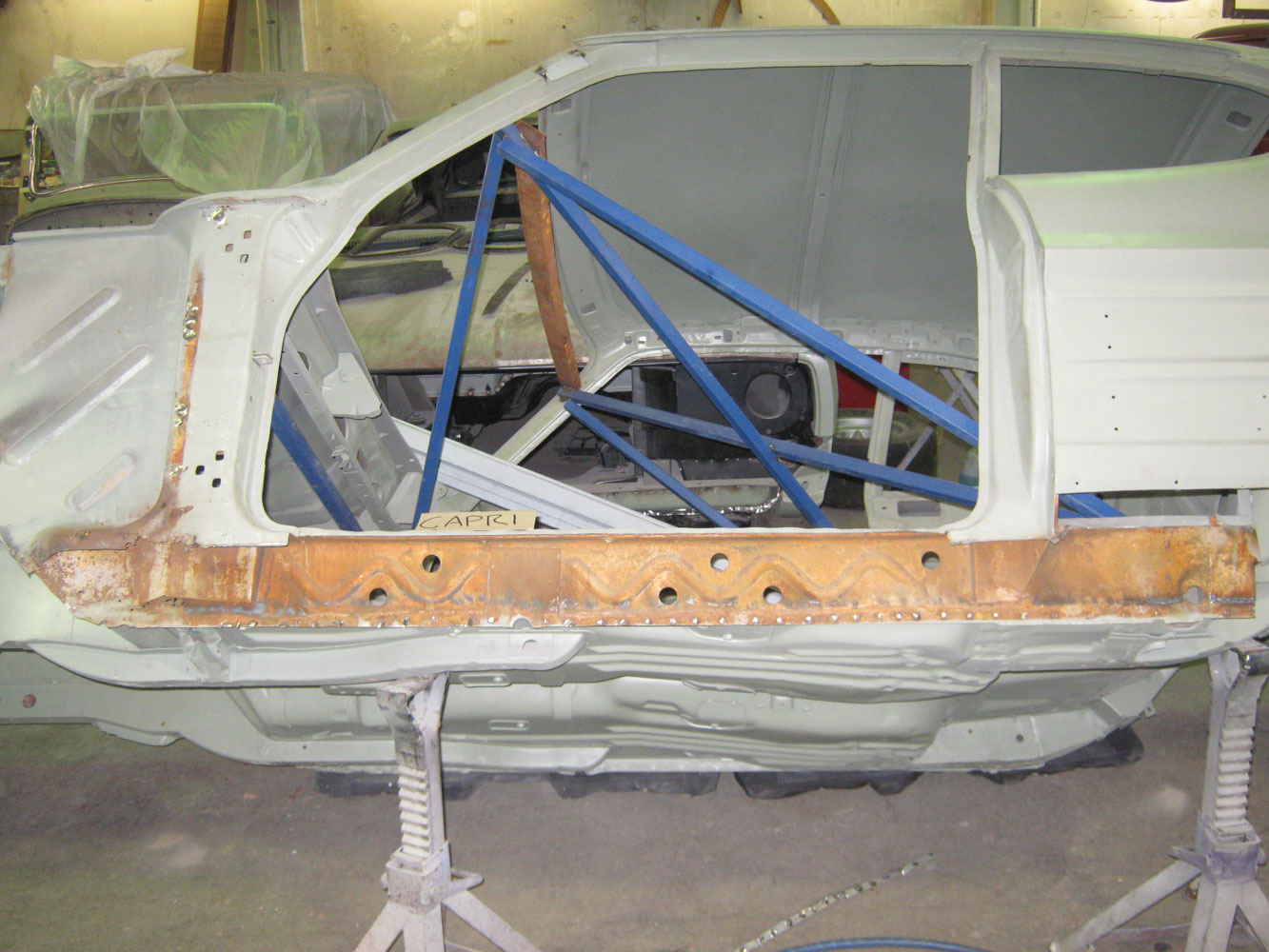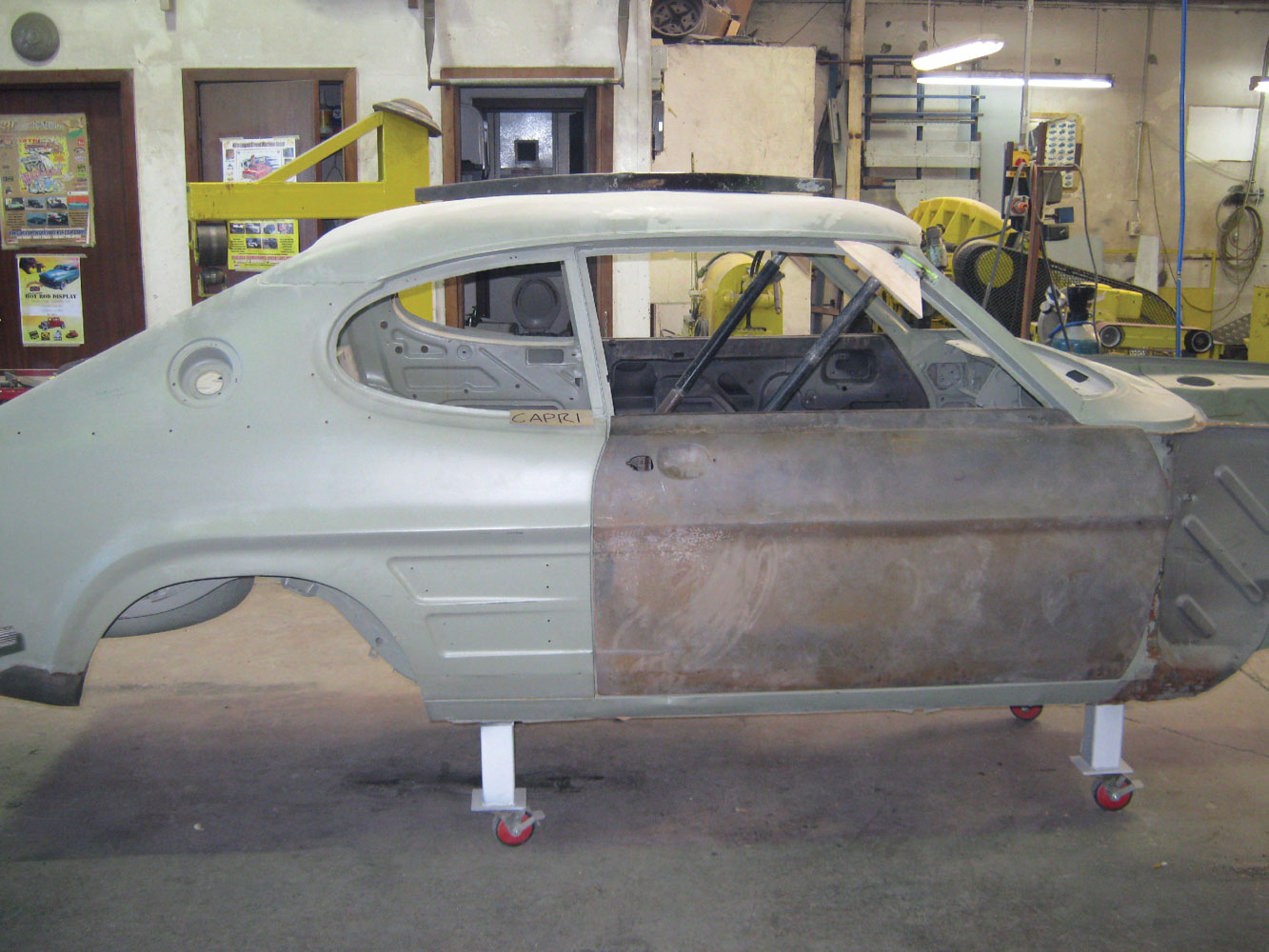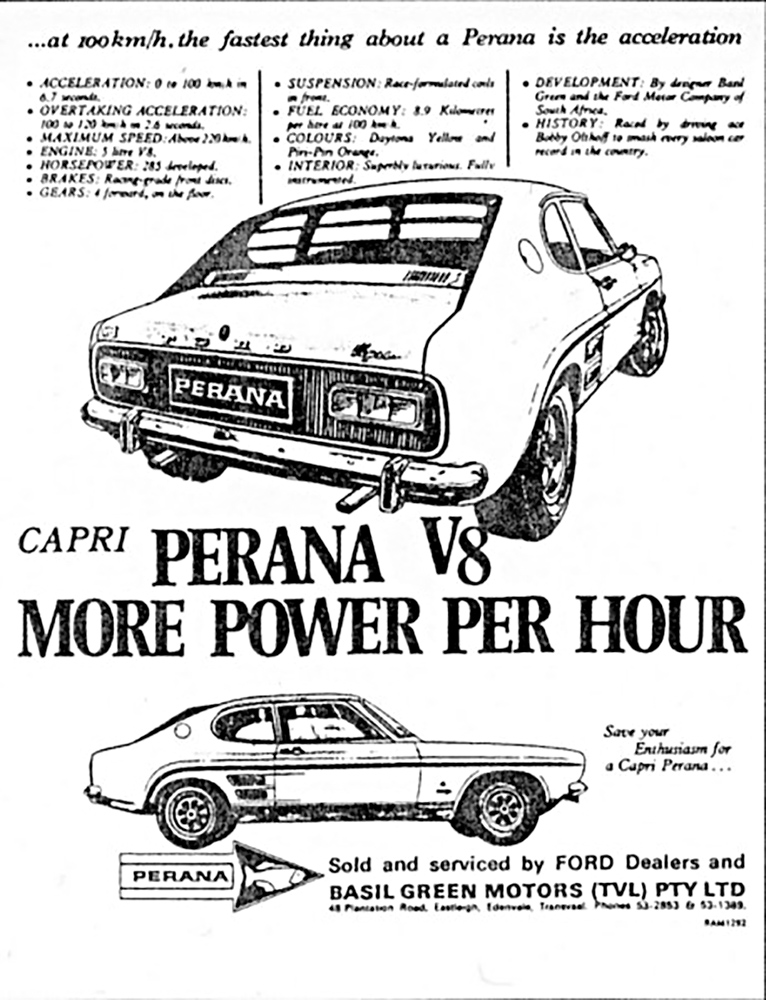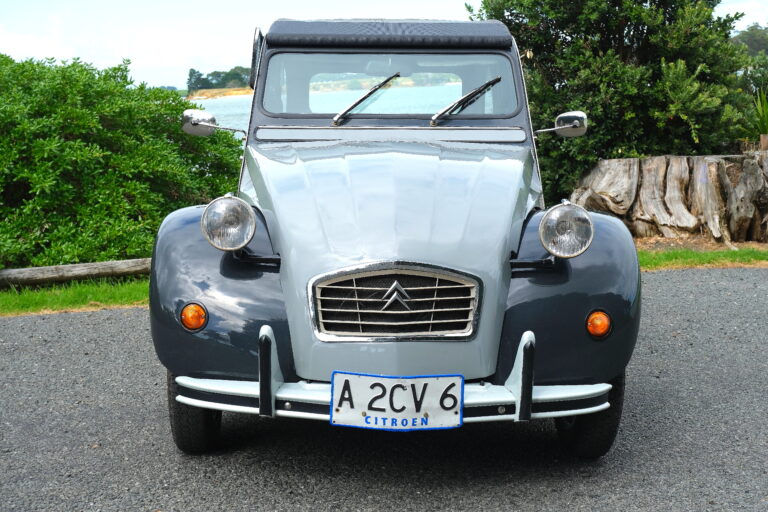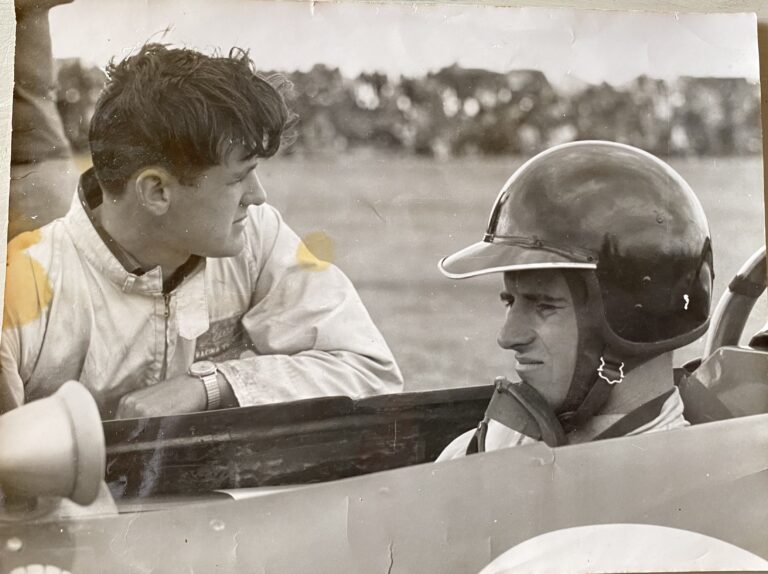data-animation-override>
“Cars don’t come much more iconic than the famous Mustang V8–engined Ford Capris created by South African tuner extraordinaire, Basil Green”
Hailed as one of South Africa’s fastest sports cars at the time, the Capri Perana V8 was the product of Basil Green Motors, a company based in Johannesburg. Green, an ex Formula One mechanic for Cooper, began his aftermarket tuning career by heavily modifying Minis, but was soon selling popular performance conversion kits for a variety of Fords. The name ‘Perana’ was originally coined as a model name when Green dropped an Essex V6 engine into a Cortina — to make the Cortina Perana. Basil Green Motors soon became synonymous with performance on the road as well as the race track, as it applied a simple philosophy of shoehorning large-capacity engines into popular Ford models — it was a successful recipe for those wanting elite, high-powered cars in South Africa during the late ’60s and early ’70s.

Most famously, Green’s next step was to take two basic ingredients — a Ford Capri 300XL MkI and a 5.0-litre Mustang V8 engine — to produce the iconic Capri Perana V8. With an uprated gearbox and suspension, plus a few additional go-faster bits — a four-barrel Holley carburettor sitting on top of a high-rise aluminium intake manifold, high-performance air cleaner, and an optional hydraulic or Boss 302 solid lifter camshaft with stronger valve springs — the Capri Perana was something very special.
This smooth-running low-slung machine had the ability to show a very clean pair of heels to many imported exotics — when our own Motorman magazine tested a Capri Perana in 1970, it recorded a top speed of 240kph and a very respectable 0–100kph acceleration time of 6.4 seconds.
Classic cavalcade

The owner of our featured Capri Perana V8, Duncan Jefferis, has always had an interest in motor cars — an interest that over the years developed into a specific bent for late ’60s and early ’70s muscle cars.
During his high-school years in the mid to late ’70s — boarding at Southland Boys’ High School in Invercargill — Duncan stored away vivid memories of Ford GT Falcons and Holden GTS Monaros cruising the local streets. However, it was his occasional trips to Teretonga Raceway to watch local legends such as Inky Tulloch and Pat Monaghan, among many others, that truly cemented his desire to one day own one of those mighty Ford or Holden muscle machines.
Like most of us who started off with ‘one day I’m going to own one of those’ aspirations, Duncan’s automotive journey commenced on a somewhat more mundane footing, and his first set of wheels was a 1957 Ford Prefect (in which he achieved the first of only two speeding tickets he’s ever received — although admittedly in a 50kph zone) before he moved on to a much sportier Ford Escort. That car was, in fact, the last Ford Escort Sport 1600 sold new in New Zealand, Duncan having purchased it in May 1981 from Sterritt Ford of Oamaru. The local Gore Ford dealership, AV Latty, tried in vain to sell Duncan the latest Ford Laser, but he was adamant that he didn’t want a front-wheel-drive car. Not wishing to lose a sure sale, AV Latty then located the Ford Escort in Oamaru. As it was the very last one sold, it was fitted with a vinyl roof.

Since then Duncan has owned several interesting cars, including a 1978 HX Holden Monaro, 1972 Valiant RT Charger, 1982 VH SS HDT Commodore — one of only 30 Kiwi-built cars (avoiding Australian ADR regulations gave these cars more power than their Aussie equivalents), an HX Holden ute, 1972 Fairmont XY GT (a South African–built example), 2004 BA GT Falcon, and a 1958 Custom 300 Deluxe, a car he still owns today.
Duncan’s 1958 Custom 300 Deluxe (Gold Flash) is a true survivor car, and one that was originally owned by his father — the striking Dresden Blue Ford Gold Flash being delivered to the Jefferis’ family on November 18, 1958, from the same dealer who would later supply Duncan with his Escort — AV Latty of Gore. That car was a trusty servant to Duncan’s family, including his older sisters, for many years. When Duncan’s parents passed away — close together during his primary school years — a young local in the auto-wrecking business by the name of Peter Woods purchased the Gold Flash from the Jefferis estate. That was in 1971 and the car had only 30,000-odd miles (48,280km) on the clock. Woods then used the Ford as the tow vehicle for his stock car whilst building a formidable reputation around the country’s dirt tracks through the ’70s.
In 2000, Woods finally gave in to Duncan’s pestering and sold the Gold Flash to him. This car has retained its original immaculate condition, and now holds pride of place in the Jefferis’ car shed, cementing his love of cars for a future generation, as Duncan’s two sons — Luke and Scott — love cars as much as their father does.
Real or replica?

In late 2002, Duncan purchased a South African–built Ford Falcon XY GT (manual) from Bernie, an Invercargill-based importer, a car he kept until 2007. In the next shipment from the same importer, Duncan looked at another XY GT Falcon and a South African–built Holden Monaro as an investment. Unfortunately the XY had been tampered with in transit, and many of the rare parts had been stolen from it, putting Duncan off buying the car. He took a quick look around the 308 HT Monaro, but even to the untrained eye this also looked like a major project, and Duncan decided to pass up on that one as well.
Expressing his sadness and disappointment at the state of these once-magnificent muscle cars, Duncan reassured the importer, Bernie, that he still wanted to buy something special: the importer’s eyes sparkled as he said, “How about a Perana Capri?”
At that moment Duncan was ushered to the rear of his building to see a MkI Capri looking a little forlorn, painted white and sitting on oversize tyres. This car had arrived in the country in 2002, and Duncan’s initial thoughts were not positive. However, after spying the two massive exhaust pipes dominating the Capri’s rear view, his curiosity meter was heading up the scale.
Bernie lifted the bonnet and there, nestled low and close to the firewall, was a Ford 302 (5.0-litre) Windsor V8 engine. Duncan also spotted the original Ford-designated tag and the Basil Green ID tag stamped with the magic matching numbers — BG0026.

He was still a little sceptical at this stage, doubtful that the Capri was a genuine Basil Green Motors–built car. He’d heard tales that these beasts were harder to find than the Loch Ness Monster, similar to the GT and HO Falcons of the ’70s and ’80s, and that many fakes and non-matching cars were being sold as genuine. Indeed, Duncan says that South Africa is awash with such replicas today, with many being advertised for sale as genuine cars.
After undertaking some basic research and being told a different story from each source contacted, Duncan decided to take the plunge and purchased the car with the intention of turning it into a club or entry-level Targa car.

He still believed it to be a Perana replica, and having shifted his family to Darfield (west of Christchurch), the Capri was shipped to a boutique race car workshop. The plan was to have a roll cage fitted and the brakes upgraded so it could begin its life as a classic club racer.
However, on only the second day in the workshop, a third vehicle ID tag was found under the original floor sealant below the driver’s seat. It matched the under-bonnet tags — and that was enough to completely authenticate the car as a genuine Basil Green–built Perana V8.
The race shop suggested a total restoration, as it was very reluctant to continue with the original plan to race modify such a rare and magnificent piece of motoring history.
More research was undertaken, and a decision was made to head down the rocky path of restoring the Capri back to original condition. Duncan had no idea what to expect on this journey, but needless to say he jumped in boots and all, regardless, though he says it became apparent early in the project that he was well out of his depth, and with the potential to make mistakes along the way, he needed to make sure any restoration work was handled correctly.
Project Perana

It was suggested to Duncan that Burkes Metalworks in Christchurch was as good as you could get to take over the Perana’s restoration job. It was also working on the ex-works ‘Cologne’ Capri owned now by Roger Townsend, and originally raced in New Zealand by Paul Fahey and Inky Tulloch, which meant they had a fresh and vital working knowledge of high-performance Capris.
After discussing the project with Jason Burke, the decision was made to give the Perana to Burkes Metalworks to undertake a full restoration. The bare body shell was delivered completely stripped and dipped, with everything else packed carefully into boxes and ice-cream containers. Duncan also made contact with Wayne Stockman in Auckland, who became the ‘go-to’ person for information and advice on where to secure correct parts. Wayne has an encyclopaedic knowledge of Capris, and took the opportunity — whilst on a business trip to Johannesburg — to meet Basil Green and spend an evening with a local, long-term Perana owner. He was able to glean some valuable information that would progress Duncan’s project, especially as Burkes had become stuck on a few points that Wayne was able to clarify. With Wayne on board and overseeing the project, the restoration moved forward with added confidence.

As work continued, the Capri was discovered to have rust in all the usual places, including the boot floor, tail-light panel, left and right side sills, lower front panel, and the floor area. Jason Burke and his team refabricated and fitted new panels where necessary, and were able to source and fit a new front panel. They spent many hours getting the body absolutely perfect, including fine-tuning all the panel gaps before the Bright Yellow (Glasurit 2K) paint was applied. With only a few exceptions, Peranas originally came in two colours only — Bright Yellow and Peri-Peri Red. Duncan’s Perana (BG0026) had been originally painted Bright Yellow but had, sometime in the past, been repainted red, then white over the top of that.
Turning to the Capri’s underpinnings, the entire suspension system was rebuilt and fitted with new bearings and bushes, whilst the differential was rebuilt by The Diff Shop. The springs were reset by Bellamy & East, and the brakes were rekitted with new seals, while fresh pads and shoes were also fitted.

The original top-loader four-speed gearbox was completely rebuilt in-house, whilst the original 302ci (4.9-litre) V8 engine was stripped down by Steve Webber at the Performance Engine Centre in Christchurch. Steve found the engine to be in very good shape, and reassembled it after giving the motor a thorough check-up. Max Wildermoth took care of refurbishing all the anodized aluminium and stainless-steel mouldings, while Bumper Replacements rechromed the front and rear bumpers. Wayne Patrick of Patrick Auto Trimmers in Christchurch, after sourcing the appropriate materials, rebuilt and trimmed the seats and refitted the interior, as well as a fresh vinyl roof. Interestingly after much research, it was discovered the original Perana seat material was the same as that fitted to 1968 Mercedes-Benz models. The original glass was refitted, along with the original rear window louvre and 5.5-inch chromed Rostyle wheels.
A totally original pre-facelift Capri 1600 MkI was purchased to provide a reference/template and to donate parts — also helping to ensure the Perana’s wiring loom and other items were installed exactly as original.
Brutally fast

With the Perana finally completed, Jason Burke handled the initial test drive — quickly discovering just how brutally fast the car was going to be when the taps were fully opened. Jason also found out that, with 220kW on tap (a whisker under 300hp), the Perana became dangerously unstable at high speed — at a point when it still had plenty of reserve power on hand. When the chin spoiler was fitted to the Capri, this instability was cured instantly.
The Perana was finally registered and warranted in December 2014 — after a 12-year restoration journey. The financial crisis of 2007 had taken its toll on Duncan’s disposable income, causing the project to be set aside for a couple of years, and early progress was slow as very little information was available, and some of it proved to be incorrect.

Duncan reckons the Perana is surprisingly easy to handle and can be driven normally, belying the monster it transforms into with a simple stab of the throttle. At normal road speeds it is a little hard riding and tends towards understeer, however, it begs to be driven with enthusiasm. At speed, the car settles down and quickly begins to show the benefits of its racing heritage. On its original rims and biscuit-thin tyres (185/70/13) even modest acceleration from a standing start produces prodigious wheelspin, despite its limited slip differential — resulting in a long number ‘11’ appearing in the rear-vision mirror. Duncan’s confident that utilizing modern tyre technology would significantly reduce the car’s 0–100kph and 400-metre dash times.
Despite a 20-hectare block near West Melton to look after along with other passions — including his family, clay target shooting and martial arts — Duncan tells us that the Perana is so much fun to drive that he often finds himself looking for excuses to take it out for a quick blast up the road, and that’s definitely something we can all relate to.
1970 Ford Capri Perana V8
- Engine: Ford Windsor V8 fitted with stage 2/3 muscle kit option as per 1969 Mustang, aluminium high-rise inlet manifold, high tension valve springs and high lift camshaft
- Capacity: 4949cc (302ci)
- Bore/stroke: 101.6 x 76.2mm
- Valves: OHV, two per cylinder
- Comp ratio: 9.3:1
- Max. power: 210kW (281bhp) at 5800rpm
- Max. torque: 270Nm at 3500rpm
- Fuel system: Holley four-barrel 600cfm carburettor
- Transmission: Four-speed Toploader with aluminium bell housing and custom-manufactured driveshaft
- Suspension: Front; Independent via MacPherson struts and anti-roll bar. Rear; Live axle, half-elliptic leaf springs, twin radius arms, telescopic dampers and BorgWarner limited slip differential (LSD centre same as Australian 1968 Fairmont)
- Steering: Special one-off rack-and-pinion (sourced from LHD Capri, turned upside down and fitted in front of cross member to allow engine to sit low and back against the firewall — this gives these cars unique weight distribution)
- Brakes F/R: Hydraulic, duo servo, disc/drum. Modified front disc pads / standard 3000 Capri rear brakes
- Overall length: 4262mm
- Width: 1646mm
- Height: 1275mm
- Wheelbase: 2559mm
- Track F/R: 1346mm/1321mm
- Kerb weight: 1067kg
- Max speed: 240kph
- 0–100kph: 6.4 seconds
- Standing 1/4: 14.6 seconds
- Production: 1970–1973, although exact numbers are not known, it is believed that around 430 to 500 Capri Perana V8s were built — globally, about 50 still exist today
Buy a copy of the magazine this article first appeared in below:


